Dossofiorito does it all for the love of plants
The Phytophiler
-
Dossofiorito's Gianluca Giabardo and Livia Rossi at their studio in Verona
<i>Photo © Elisa Testori</i>
-
Sketches for the Phytophiler series at the Dossofiorito studio
<i>Photo © Elisa Testori</i>
-
Making of the Phytophiler series at the ceramics studio in Nove, Italy
<i>Photo © Dossofiorito</i>
-
Making of the Phytophiler series at the ceramics studio in Nove, Italy
<i>Photo © Dossofiorito</i>
-
Making of the Phytophiler series at the ceramics studio in Nove, Italy
<i>Photo © Dossofiorito</i>
-
Making of the Phytophiler series at the ceramics studio in Nove, Italy
<i>Photo © Dossofiorito</i>
-
Making of the Phytophiler series at the ceramics studio in Nove, Italy
<i>Photo © Dossofiorito</i>
-
At the Dossofiorito studio
<i>Photo courtesy of Dossofiorito</i>
-
At the Dossofiorito studio
<i>Photo courtesy of Dossofiorito</i>
-
Making of the Phytophiler series at the Dossofiorito studio
<i>Photo © Elisa Testori</i>
-
Making of the Phytophiler series at the Dossofiorito studio
<i>Photo © Elisa Testori</i>
-
Making of the Phytophiler series at the Dossofiorito studio
<i>Photo © Elisa Testori</i>
-
Making of the Phytophiler series at the Dossofiorito studio
<i>Photo © Elisa Testori</i>
-
Making of the Phytophiler series at the Dossofiorito studio
<i>Photo © Elisa Testori</i>
-
Making of the Phytophiler series at the Dossofiorito studio
<i>Photo © Elisa Testori</i>
-
Making of the Phytophiler series at the Dossofiorito studio
<i>Photo © Elisa Testori</i>
-
Making of the Phytophiler series at the Dossofiorito studio
<i>Photo © Elisa Testori</i>
-
Making of the Phytophiler series at the Dossofiorito studio
<i>Photo © Elisa Testori</i>
-
At the Dossofiorito studio
<i>Photo courtesy of Dossofiorito</i>
-
Exhibition of the Phytophiler series at Debeaulieu, Paris, 2014
<i>Photo courtesy of Dossofiorito</i>
-
Exhibition of the Phytophiler series at Debeaulieu, Paris, 2014
<i>Photo courtesy of Dossofiorito</i>
-
Exhibition of the Phytophiler series at Debeaulieu, Paris, 2014
<i>Photo courtesy of Dossofiorito</i>
-
Exhibition of the Phytophiler series at Debeaulieu, Paris, 2014
<i>Photo courtesy of Dossofiorito</i>
-
Exhibition of the Phytophiler series at Debeaulieu, Paris, 2014
<i>Photo courtesy of Dossofiorito</i>
-
An industrial building near the Dossofiorito studio in Verona, Italy
<i>Photo courtesy of Dossofiorito</i>
-
Surroundings to the Dossofiorito studio in Verona, Italy
<i>Photo courtesy of Dossofiorito</i>
“Last winter,” recalls Livia Rossi, “someone knocked at our studio door asking if it was a plant shop.” It was the sort of mix-up that amuses Rossi and her partner, Gianluca Giabardo—the designers behind the Verona-based, experimental studio Dossofiorito. Over the past year, the two have peppered their workshop with ferns, big philodendron, ficus, and succulents, as they’ve developed and produced Phytophiler (or plant lover), a collection devoted to plants and the people who love them. In fact, as their studio has been gradually overwhelmed by greenery, it’s surprising that this misunderstanding isn’t more common.
At once quirky and lovely, Dossofiorito’s Phytophiler consists of a series of handmade terracotta plant pots, each featuring special, functional appendages—mirrors, magnifying glasses, and more—designed to encourage specific gestures and thoughtful evaluation of the relationship between man and nature. When a plant is permanently accompanied by a magnifying lens, for example, it is hard not to investigate its details with fresh eyes. Similarly, when a plant is surrounded by a mini-universe of smaller, satellite plant containers (designed to achieve an ideal microclimate for all involved), one can’t help but consider the set holistically.
Each Phytophiler pot is handmade on a wheel by ceramists in Nove, a noted ceramic district near Vicenza. Dossofiorito makes all the charming extremities (primarily from stainless steel and/or glass) in-house. Working from the ground floor of a converted auto body shop in a historically industrial Verona neighborhood—“a strange mixture of industrial archaeology and concrete apartment blocks from the ’60s and ’70s,” according to Giabardo—Phytophiler was first inspired by the partners’ personal love of nature and an exploration of their daily interactions with plants. “After taking care of our plants for some time, we realized that we had been building real relationships with them—through daily observations and care, through rejoicing in new buds and leaves, and through our sympathy and attempts to understand their needs when they don’t look too well.”
As they thought more and more about their own connections to plant life—why, for example, Rossi “needs to surround herself with plants to feel fully at home”—they also began to educate themselves on more widespread, changing perceptions of man’s connection to nature in a range of scientific and creative fields.
The designers explain: “Scientific evidence shows that the presence of plants in our domestic and working spaces is important for our general wellbeing . . . They purify air and absorb radiations, contribute to improved moods, lower blood pressure, increase concentration, and speed up our recovery in cases of injury . . . Plants are also a strong presence in our living and working spaces, and there is a deeper attention to the architectural and urban planning of green areas in many of our cities. We don’t think of this as a temporary trend; we see it as the sign of an important shift in our way of relating and feeling towards nature.”
The designers believe that the Biophilia hypothesis (elaborated by American biologist E.O. Wilson in 1984 and revised at the beginning of the ’90s) comes closest to providing an explanation for this positive influence. “The emotional connections between humans and nature have been acknowledged [frequently] in recent years. A new branch of ecology, called Affective Ecology, specifically focuses on these human-nature emotional connections as a powerful lever to raise awareness among a wider audience on environmental issues. At the same time, Plant Neurobiology is demonstrating how plants, even lacking a traditional nervous system, are able to communicate and process information, sustaining the hypothesis that they are beings more sensitive and intelligent than we might think.”
On a more visceral level, Dossofiorito points to a broad enthusiasm for plants that crosses demographic and cultural boundaries, one that they hope to tap into and nurture with Phytophiler. They firmly believe that “by engaging more actively with plants,” people will enjoy more moments that capture the “sense of wonder and amazement that you can have looking at plants from a different perspective.”
It seems a fitting goal for the pair, whose own name means “flowery mound.” Giabardo found a slightly worn, neon sign bearing the words Dosso Fiorito in one of Verona’s junkyards a few years back while hunting for art materials, and the name just fit. “At the time, we chose it as our studio name without much thought; we just liked the look of it and Dosso Fiorito sounded quite poetic,” Rossi recalls. “But now we think it fits us very well. We like the idea of spring and nature it evokes, and also we love the image of a little bump—something not incredibly noticeable in the ground that can alter, even for just a few seconds, your steps. Really,” she says, “we would love our design works to operate in the same subtle, yet incisive way.”
-
Text by
-
Anna Carnick
Als ehemalige Redakteurin bei Assouline, der Aperture Foundation, Graphis und Clear feiert Anna die großen Künstler. Ihre Artikel erschienen in mehreren angesehenen Kunst- und Kulturpublikationen und sie hat mehr als 20 Bücher herausgegeben. Sie ist die Autorin von Design Voices und Nendo: 10/10 und hat eine Leidenschaft für ein gutes Picknick.
-
Designbegeisterte hier entlang
Mid-Century Teak Blumenbank, 1960er

Großer Schwarzer Rigitulle Metall Blumentopf von Mathieu Matégot, 1950er
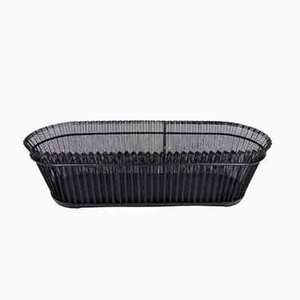
Antiker Blumentopf aus Gusseisen

Dänische Palisander Blumenbank, 1960er

Skulpturaler Spindel Blumentopf von Willy Guhl & Anton Bee für Eternit, 1950er
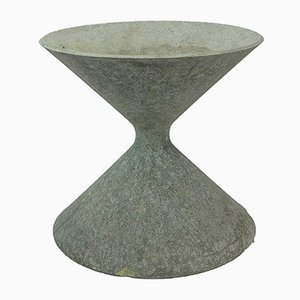
Pflanzer aus Glas, Messing & Acrylglas, 1970er

Vintage Blumenkästen von Willy Guhl für Eternit, 4er Set

Messing Blumentopf von Jean-Claude Mahey für Romeo, 1970er
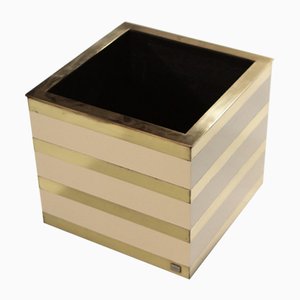
Schweizer Blumentopf von Willy Guhl für Eternit, 1960er
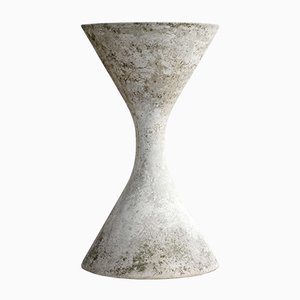
Keramik Übertopf von Fritz van Daalen, 1950er

Englisch Waschtonne Übertopf, 1930er
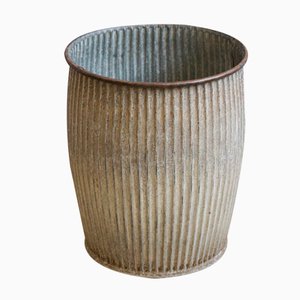
Grauer Vintage Zement Pflanzer von Eternit

Vintage Faserzement Pflanzer in Grau von Eternit

Vintage Spindel Übertopf von Willy Guhl für Eternit Schweiz
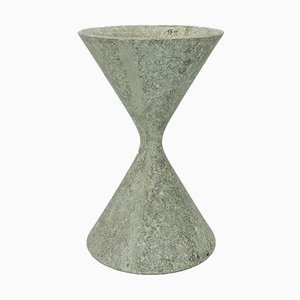
Englischer Übertopf oder Regentonne aus Zink, 1930er

Blumentöpfe von Willy Guhl für Eternit Schweiz, 1950er, 2er Set

Vintage Spindel Übertopf von Willy Guhl & Anton Bee für Eternit

Skulpturaler Pflanzer von Willy Guhl und Toni Bee für Eternit AG

Dänischer Pflanzer Beistelltisch von Arne Wahl Iversen

Schweizer Handkerchief Blumentopf von Willy Guhl für Eternit Schweiz, 1952
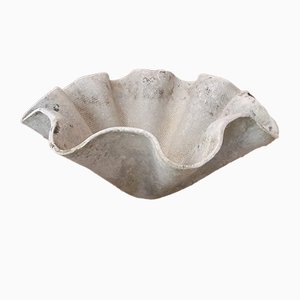
Antike französische Pflanzer aus Nussholz, 2er Set
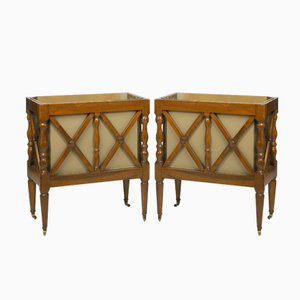
Chinesische Porzellan Pflanzer mit Palisander Sockeln, 1900er, 2er Set

Art Deco Marmor Pflanzer, 1920er, 2er Set




























 Detail of The Phytophiler No.2 (Mirrors) by Dossofiorito
Photo © Omar Nadalini; Courtesy of Dossofiorito & L'AB/Pamono
Detail of The Phytophiler No.2 (Mirrors) by Dossofiorito
Photo © Omar Nadalini; Courtesy of Dossofiorito & L'AB/Pamono
